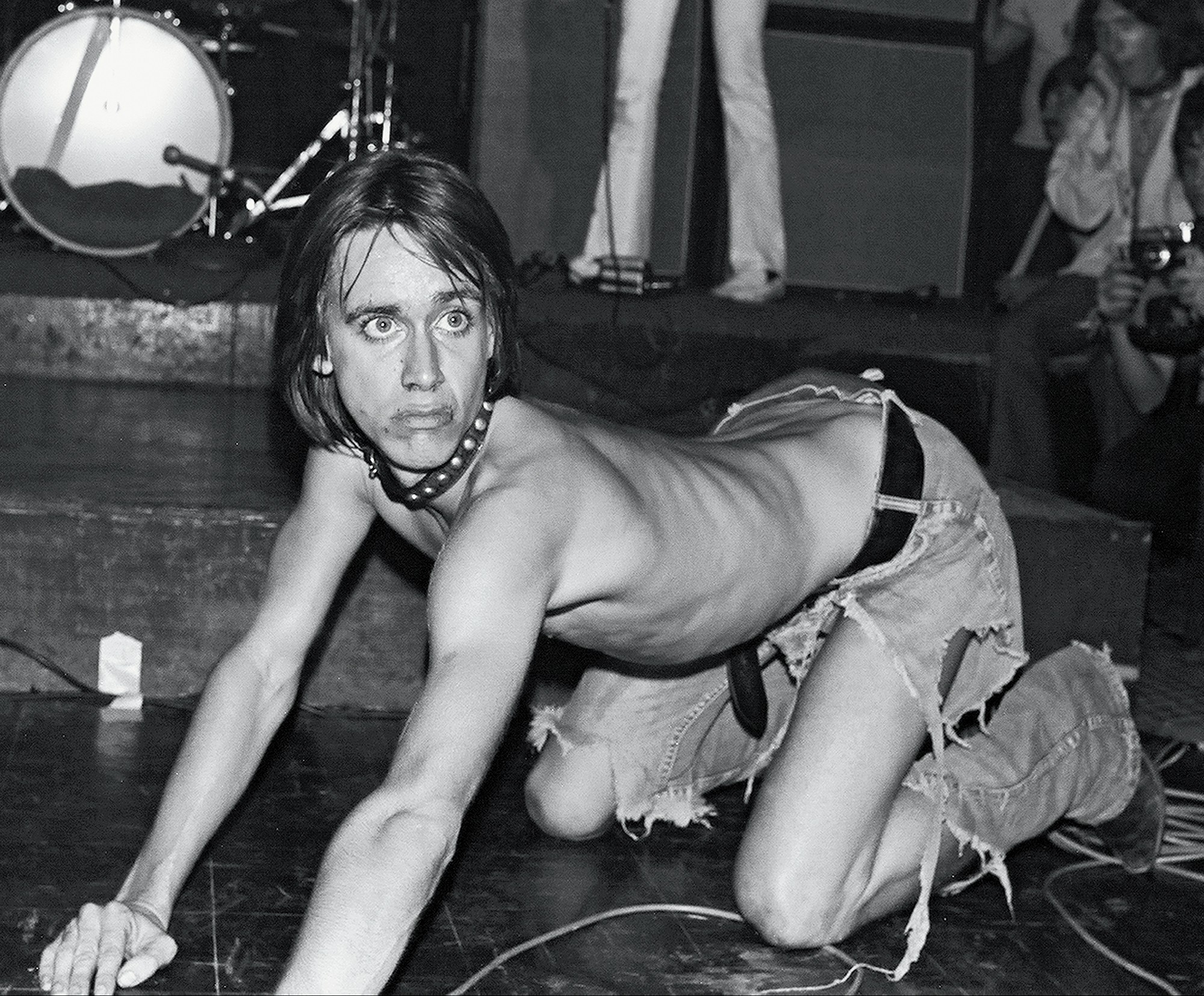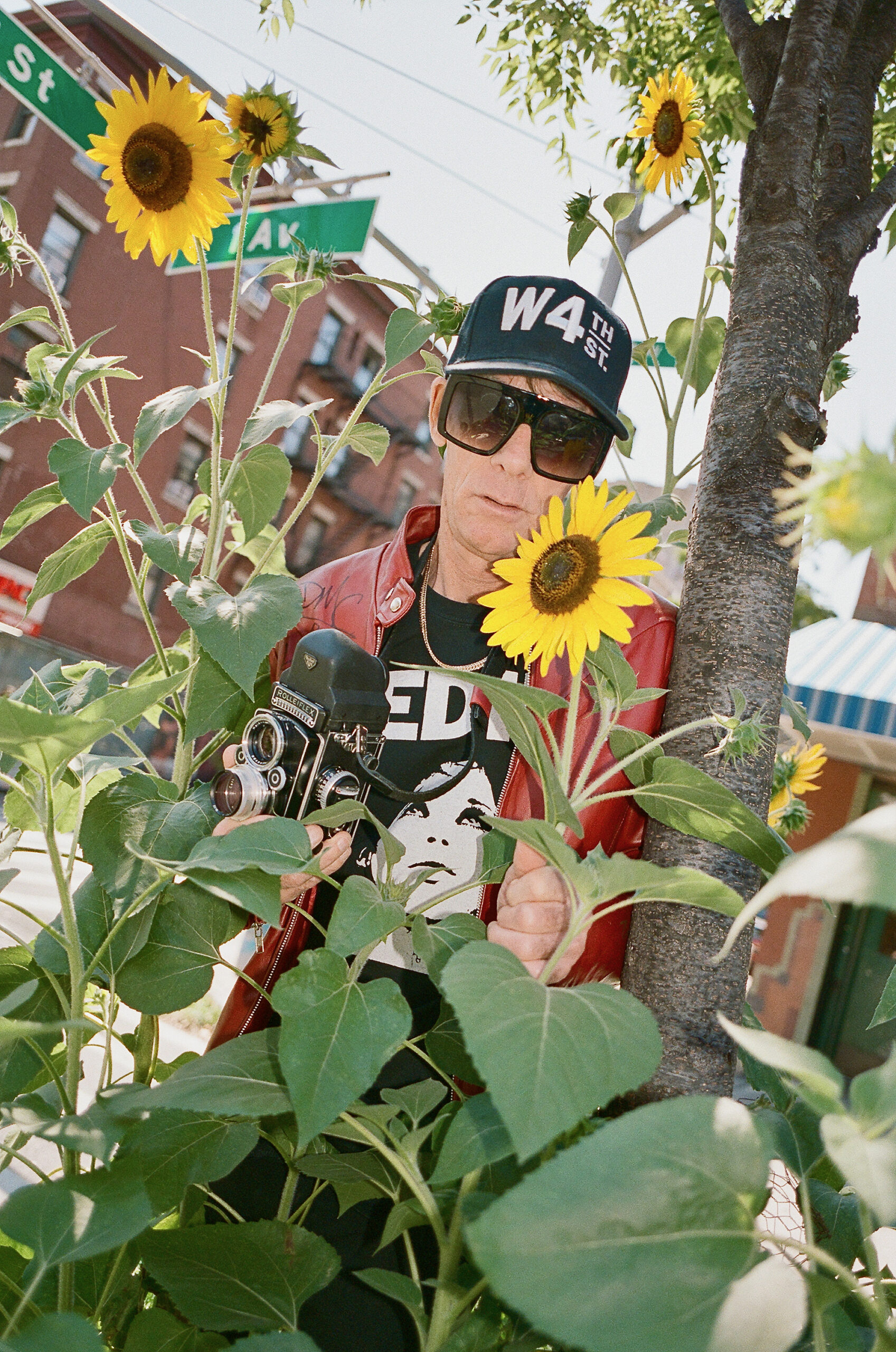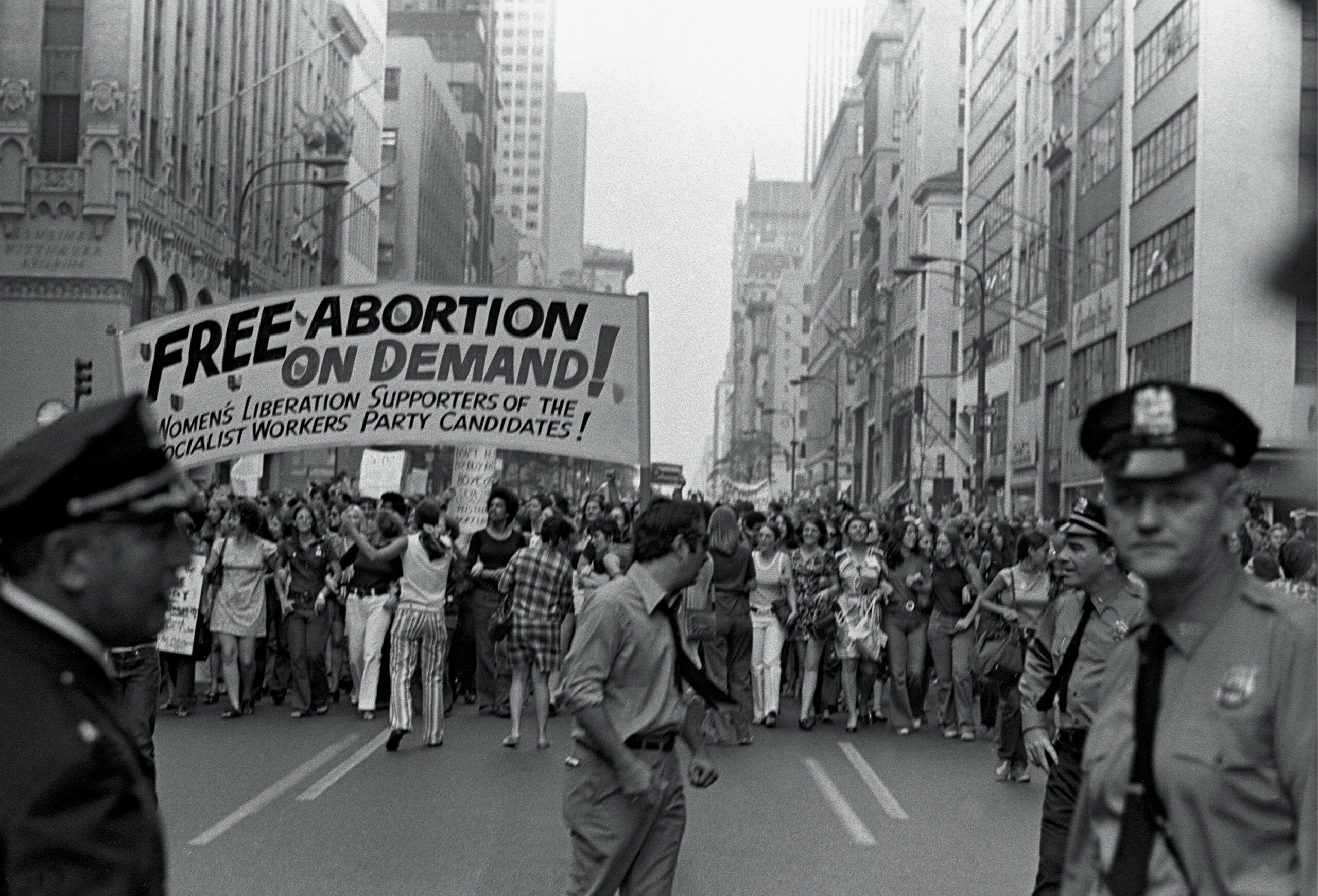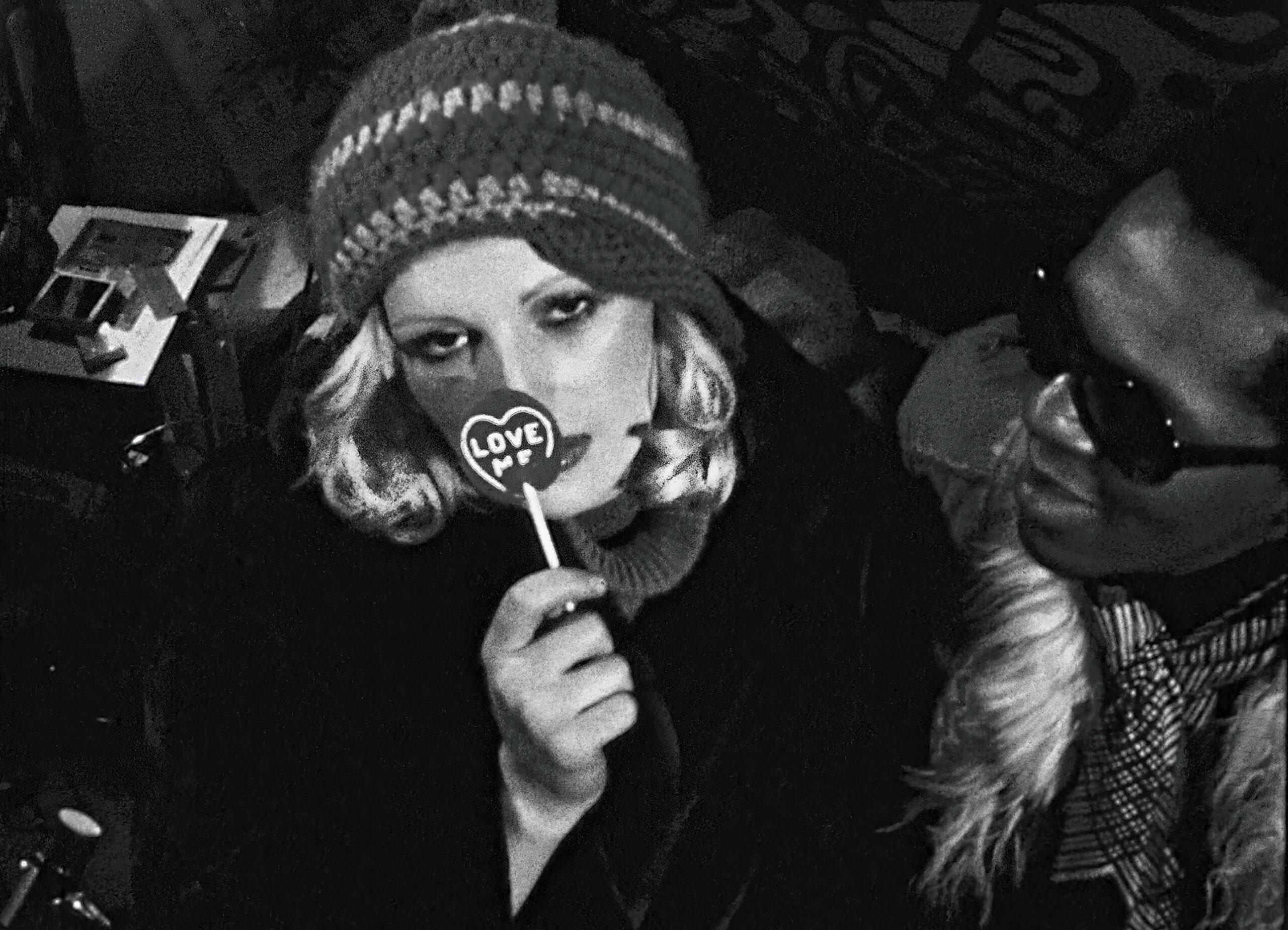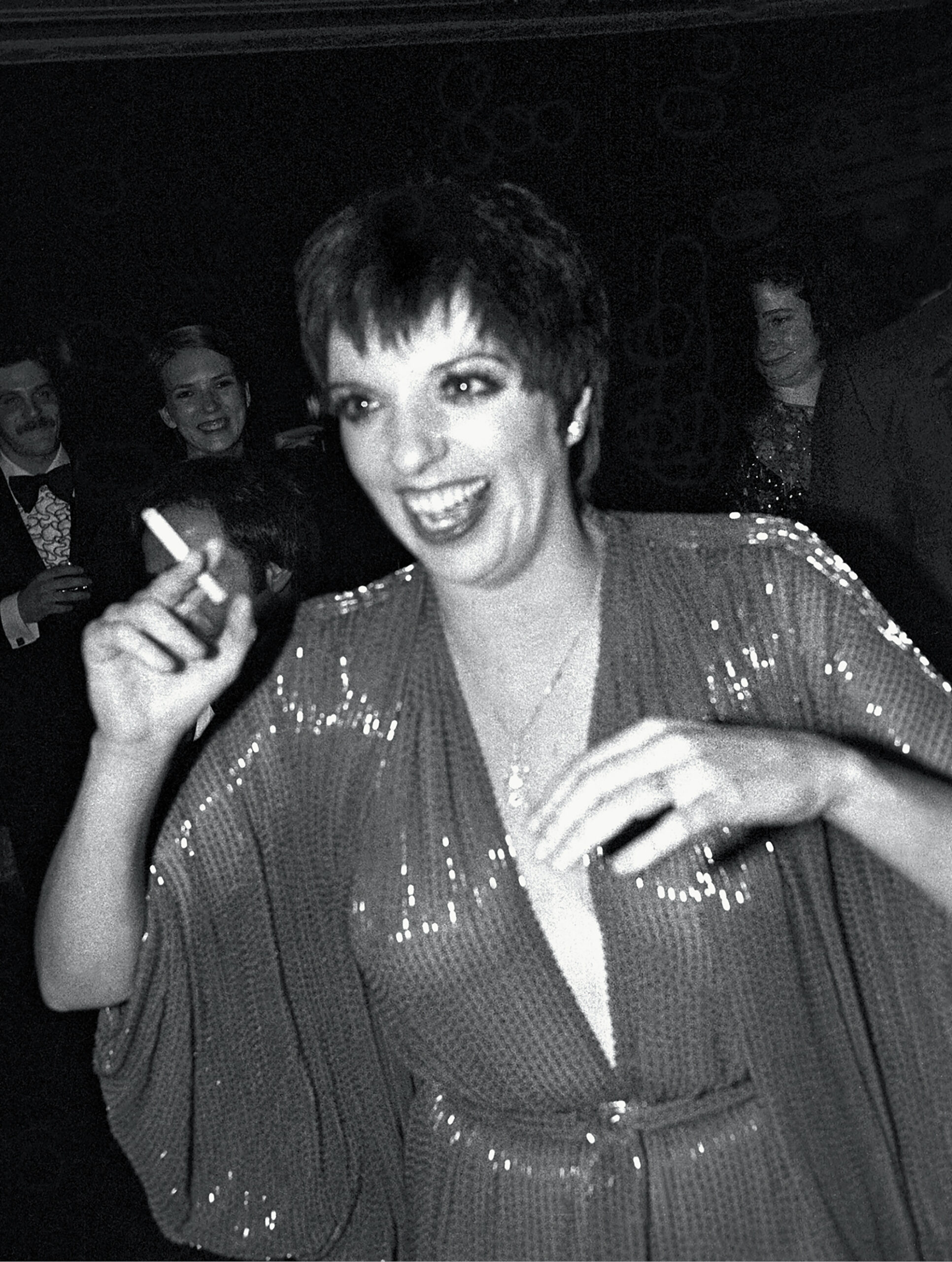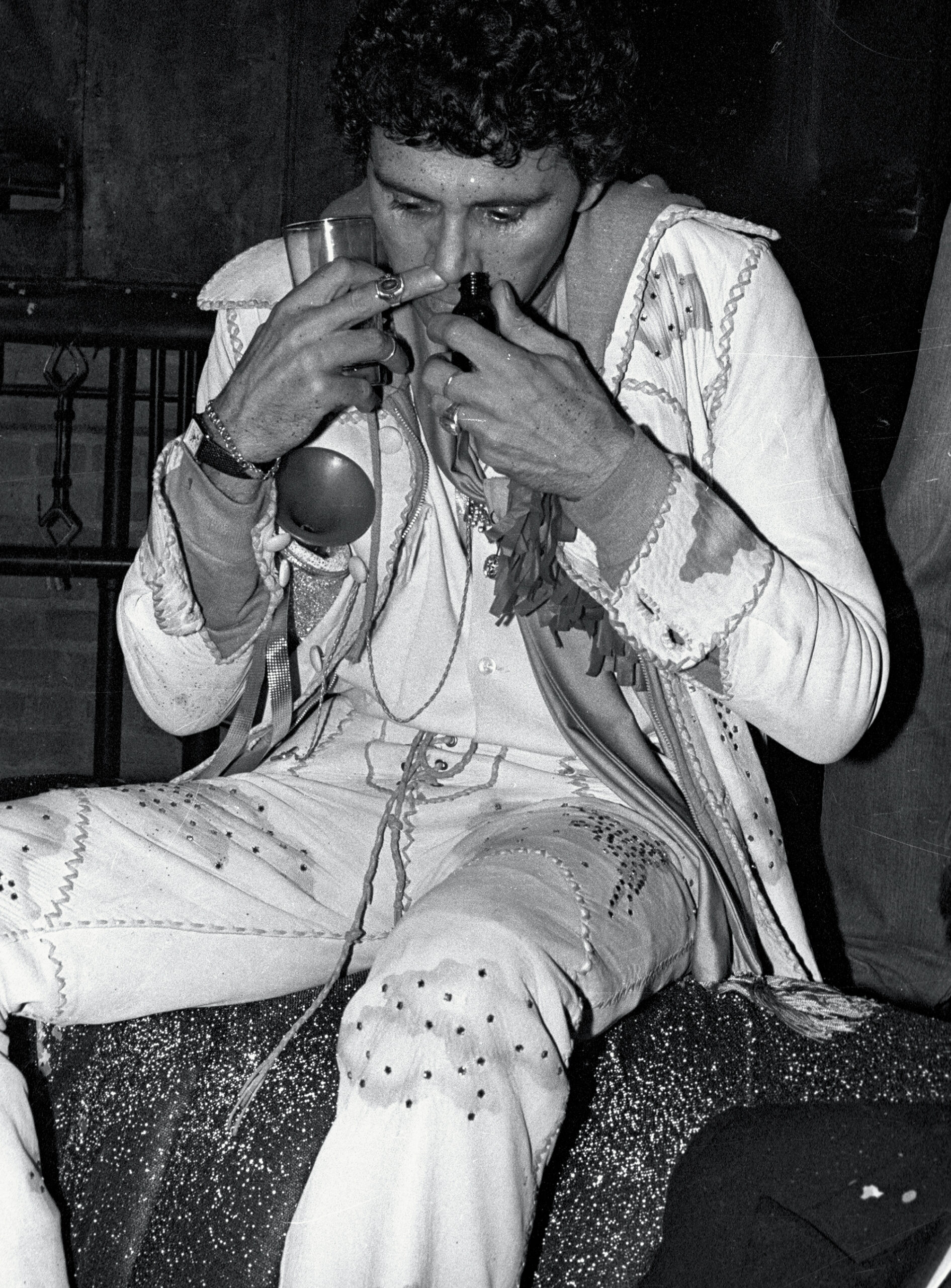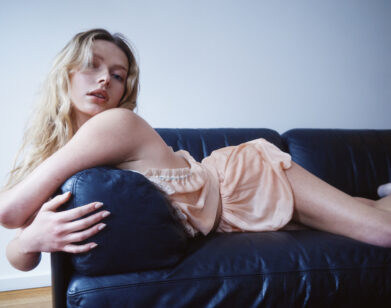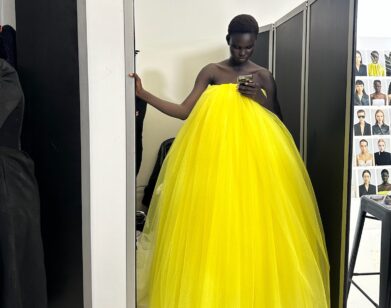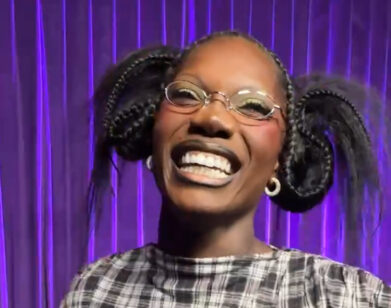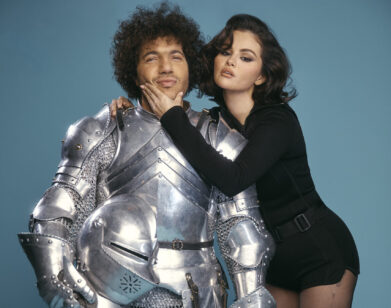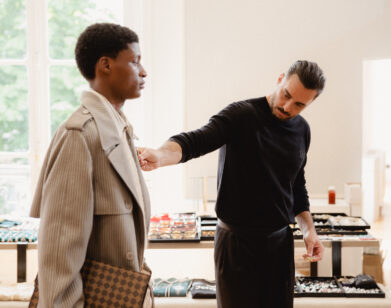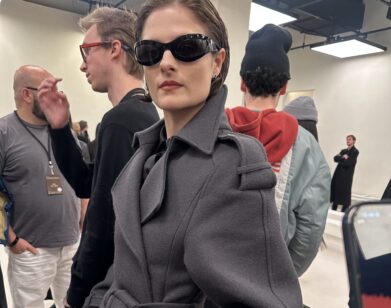PHOTOGRAPHER
“Friendly Loving Voyeurism”: Dustin Pittman Tells Mel Ottenberg Why He’s No Paparazzi
Dustin Pittman and his camera have seen it all. Since getting a taste for New York’s beatnik scene as a teen in the early ’60s, the Adirondacks-born photographer has been documenting the highs and lows of American culture, capturing everything from Woodstock to Ronald Reagan’s inauguration. Now, he’s revisiting some of his most iconic images in New York After Dark, a Rizzoli monograph by Roger and Mauricio Padilha that features selections from his stunning archive of over 100,000 photos. Narrowing in on the ’70s and ’80s, the book captures the glamour and grit that once made NYC tick, including photos of Andy Warhol and Liza Minnelli getting down at Studio 54, as well as galvanizing images of the early queer liberation movement. “I wasn’t into celebrityism,” Pittman tells Interview editor-in-chief Mel Ottenberg of his strategy for capturing the limelight. “They were friends of mine, so I was able to get unguarded moments.”
———
TUESDAY 12 PM JULY 9, 2024 NYC
DUSTIN PITTMAN: Mel.
MEL OTTENBERG: Oh, hey. Hi.
PITTMAN: How are you?
OTTENBERG: I’m fantastic. How are you?
PITTMAN: Good. Thanks for meeting.
OTTENBERG: Of course. I’ve been wanting to put you in the magazine, and now is the perfect time because of your great new coffee table book. So wait, you came to New York in 1969?
PITTMAN: In 1961. My older brother had an apartment here, on MacDougal and Bleecker. My mom used to let me come down on the Greyhound bus and my brother would pick me up at the station and bring me down to Greenwich Village. That was during the beatnik time, when everybody was dressed in buttoned-down collar shirts carrying books under their arms.
OTTENBERG: Whether or not everyone was an alcoholic, they were very pulled-together.
PITTMAN: Absolutely. Coffee shops were the thing—Cafe Rienzi, Figaro, Cafe Wha?, Kettle of Fish, Tin Angel, the Bitter End, every one of those clubs on MacDougal and Bleecker and the whole Greenwich Village and West Village area. I stayed close to my older brother and his friends and went to a lot of poetry readings. Washington Square Park was a hot area for protests and folk music. It was a wonderful experience. Even though I loved the Adirondack Mountains where I grew up on a farm, I really loved the idea of expanding my horizons.
OTTENBERG: Okay. So you’d go from the farm to the beatnik zone. Were you doing speed?
PITTMAN: I was just smoking weed. The first time I did drugs was in ’67 or ’68, the hippie time. My brother gave me my first hit of acid, called the Mighty Quinn. I remember taking it at some restaurant, and boy, I really blasted off.
OTTENBERG: Yeah. Far out.
PITTMAN: I never did acid in the Adirondacks because nature was a drug for me, a love drug.
OTTENBERG: Wait, are you wearing your Edie [Sedgwick] t-shirt?
PITTMAN: Yeah.
OTTENBERG: Everyone must know, your uniform is this Edie t-shirt, and I believe that’s the cover image from Ciao! Manhattan, right?
PITTMAN: Yeah. I love Edie. I only met her the last two years of her life when she was in really bad shape. I didn’t know her when she was bouncing around with Gerard [Malanga] and everybody, I was too young. Everyone gravitated toward her. She had a trust fund and took care of everybody. She was a survivor.
OTTENBERG: Okay. Let’s go back to when you moved to New York in ’69, 55 years ago. Who’s the first person that made it all happen?
PITTMAN: A lot of people made it happen for me. Ingrid Superstar introduced me to Andy. Ronald Kolodzie and Philip [Haight] introduced me to Halston. I’d roll with people from clubs or dinners, and fall into one person and then another and another. In the designer field it was Stephen Burrows, Giorgio Sant’Angelo, Fernando Sánchez, Scott Barrie, that whole scene.
OTTENBERG: Calvin Klein.
PITTMAN: In the art field, Antonio Lopez and Juan [Ramos]; in the fashion illustration field, Kenneth Paul Block. But in terms of patrons, Jerome Hill, who was the heir to the Pullman car—he was a billionaire—and Charles Rydell, his lover. They had houses in Gramercy Park, where I stayed; they had apartments in the Algonquin, where I stayed; and they had a beautiful house and 37 acres of land in Bridgehampton. I would go there every weekend, and because they were into the arts they knew Andy, they knew Larry Rivers, they knew Terry Southern, everybody. People would come to visit, Andy, and then every other week he’d throw a big dinner at the Algonquin and 30 people would show up, Charles Henri Ford—
OTTENBERG: This is late ’60s, early ’70s?
PITTMAN: Yeah. We’d stay out all night and go to different places.
OTTENBERG: Where’d you go?
PITTMAN: The back room of Max’s Kansas City. Nobody’s Restaurant, an incredible rock-n-roll club where Hendrix and Jimmy Page hung out. But I wasn’t into celebrityism. I knew these people. They were friends, and you’ll see that in the book—along with millions of other images I have, because the book only spans from ’68 to ’83.
OTTENBERG: It’s a great selection.
PITTMAN: I am so happy with the book, because Mauricio and Roger, we’ve been friends for years and I love what they do. They’re creating books that they’re passionate about, they love their subjects, and they love what their subjects did.
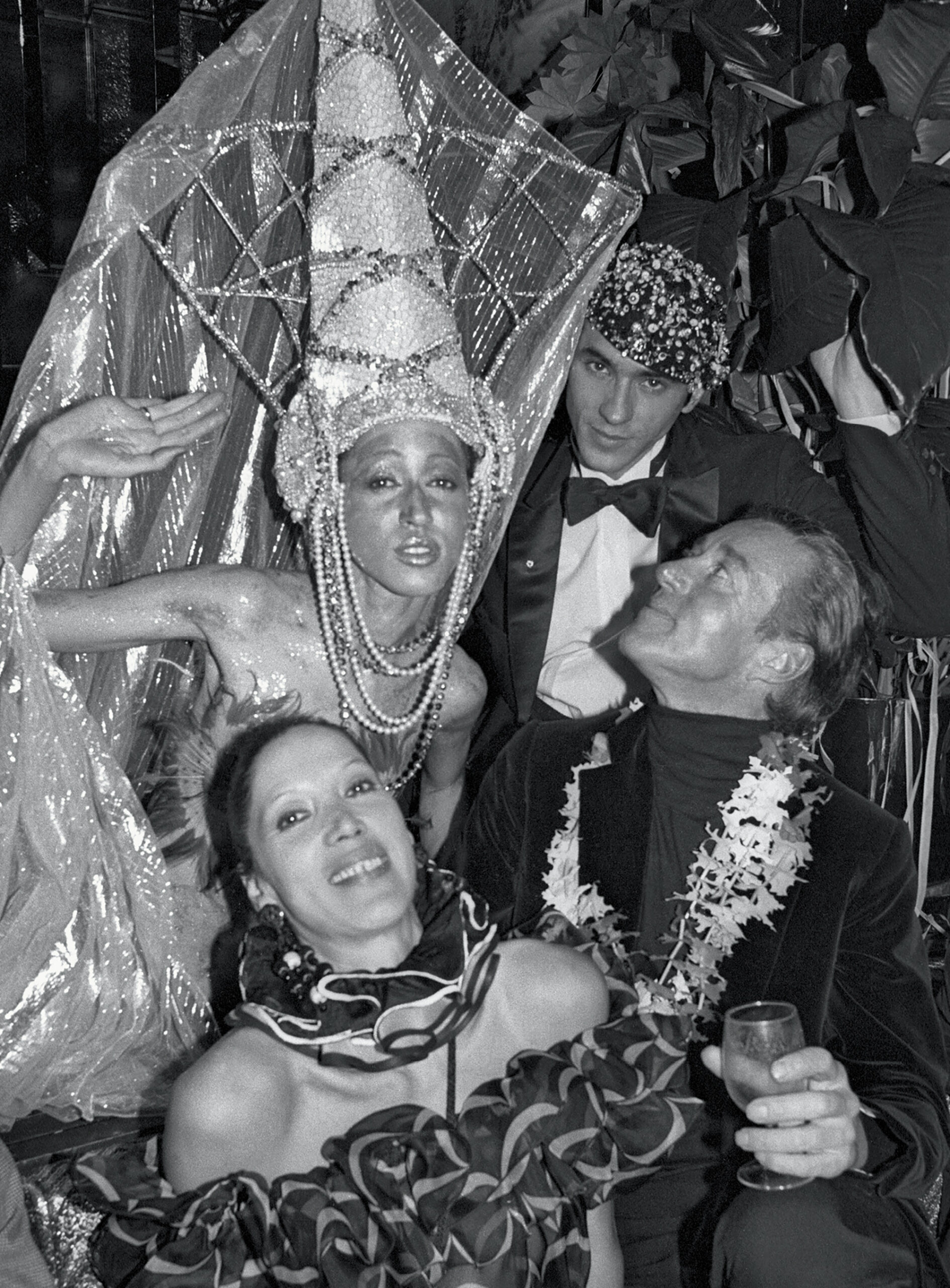
Pat Cleveland, Martin Snaric, Halston, and fashion maven Marina Schiano at Regine’s, New York City, 1980.
OTTENBERG: They really know the history. Some of my favorite pictures in this book, I didn’t know you had taken. They’re forever mood board pictures for me. Like those two really hot guys doing poppers wearing customized tank tops at Studio 54.
PITTMAN: Yeah, yeah, yeah.
OTTENBERG: That is a gay lore! I don’t recall anyone else taking pictures as perfect as that. It’s important that we know and remember that you took them, Dustin. They’re incredible.
PITTMAN: Well, thank you.
OTTENBERG: There’s so much effortless glamour in this book because you belong there. You’re cool enough that you can be at Studio 54 taking pictures among the denizens after all the other photographers are sent home. You’re backstage at the fashion shows getting the most glamorous moments in time.
PITTMAN: Well, thanks, Mel. Because they were friends of mine, I was able to get unguarded moments. They trusted me, I was part of the tribe. I was always low-key, I didn’t want to be noticed. It wasn’t about me. It was about them.
OTTENBERG: Right.
PITTMAN: I was always in the zone, looking around, stalking. It was friendly, loving voyeurism. Everybody has their pose today. But back then, people were able to let their guard down. I was friends with the downtown and uptown crowd, including socialites like Jacqueline de Ribes and Nan Kempner and C.Z. Guest. They trusted me because there were a lot of times that I had opportunities to take photos, but I respected them and did not.
OTTENBERG: Right.
PITTMAN: I also did a lot of studying. I went to the School of Visual Arts, I went to Pratt. I studied master photography with Philippe Halsman. I worked my ass off with Barney Rosset and Grove Press. I worked at Dey Street bookstore and talked as much as I could with Diane Arbus and Allen Ginsberg and people that would come in.
OTTENBERG: What was Diane Arbus like?
PITTMAN: She was shy, but once you got to know her and recommended a couple things to her—she would come into the shop in the ’70s and peruse. Also Grove Press was an incredible place to work. All their books got banned.
OTTENBERG: Right, right, right.
PITTMAN: I started helping out as security, but Barney [Rosset] made a lot of money from the Grove Press International Film Festival and importing I Am Curious (Yellow) and I Am Curious (Blue), which were the first porn films in New York.
OTTENBERG: Right.
PITTMAN: He bought the building on Mercer and Bleecker and turned it into his publishing place. He loved experimental film and he collected all 16-millimeter films, from Stan Brakhage to Ron Rice. I had the privilege of overseeing that. Not to mention the fact that Henry Miller, Allen Ginsberg, and Robert Frank were coming to Grove Press. Also, I was working for all the music magazines: Circus, Crawdaddy, Rolling Stone, but also Screw magazine, GAY magazine, Juggs magazine—Al Goldstein’s magazines. Screw was really ahead of the time and so was GAY. I was proud of my first GAY cover.
OTTENBERG: Wow. I got to see your GAY magazine cover. Okay, these Iggy Pop pictures are so hot.
PITTMAN: That was more than one night when he came to New York. And I was lucky enough to be friends with Danny Fields, who I love.
OTTENBERG: Shoutout to Danny Fields.
PITTMAN: A wonderful, incredible legend. And we all know his story with the Doors and with MC5.
OTTENBERG: The Ramones.
PITTMAN: Iggy would stay with him sometimes, so I would go over to Danny’s loft above the deli up on 21st Street and we would smoke weed, and eventually we befriended each other. Iggy had this thing where if a photographer got too close, he would break their cameras. And Iggy said to me, “Dustin, you can come as close as you want and I won’t break your camera.” That one was taken in 1970.
OTTENBERG: This is the best hairdo of all time—this Jane County, Dave Clark Five.
PITTMAN: We were really close, Jane and I, when she was Wayne. Her and Leee [Black Childers], that was our pack. I have a picture of us at a table in the back room of Max’s when we did this men’s makeup story with [R.] Couri Hay. We were all sitting around a table looking like squirrels. Lee shot that in 1970. We hung out every night in the back room at Max’s, and danced upstairs with people like Penny Arcade, and Andrea Whips, Eric Emerson, Lillian Roxon, Robert Mapplethorpe, and Peter Hujar.
OTTENBERG: But at the same time, you’re uptown doing Diana Vreeland stuff.
PITTMAN: I’d go uptown and downtown all the time. I was on assignment at different places. I didn’t meet Diana Vreeland until around ’76. But I met Geraldine Stutz from Bendel’s, and a lot of the people in the fashion business in the early days, like Carrie Donovan [an editor at Harper’s Bazaar]. When Ronald Kolodzie did his fashion line in 1971, I was modeling to make money to do photography and film, so Ronald hired me and we had this big opening; it was right outside of Halston’s boutique on Madison Avenue. That was a really good experience because they introduced me to a lot of great people. And Ronald and Philip, his lover, were just incredible. But anyway, in the early ’70s, Vogue used to do men’s fashion articles in the beginning of the issue. And Berry Berenson, Marisa’s sister, photographed me for that.
OTTENBERG: Modeling for Vogue?
PITTMAN: Yeah. People photographed me a lot.
OTTENBERG: You were easy on the eyes, Dustin. That helped you blend in, babe.
PITTMAN: Yeah, it was good. I made money, and it was also nice meeting people. I shot naked with Bill King. God, those pictures you’ll probably never see.
OTTENBERG: I know. That book really needs to exist.
PITTMAN: No kidding. Bill King was a very good friend of mine. I used to go to the studio on 105th Avenue all the time.
OTTENBERG: Wait, what club is this? Because I absolutely love this picture.
PITTMAN: That’s at Studio, but I shot a lot at Paradise Garage, too. And a lot of the gay clubs. I went to the Mineshaft, the Anvil, Toilet, all those.
OTTENBERG: None of that’s in this book, right?
PITTMAN: No. Unfortunately, they didn’t want to do XXX.
OTTENBERG: It’s another book. Maybe I’ll curate it.
PITTMAN: There’s two guys holding hands going into a porn theater, and that’s about as XXX you’re going to get. But my triple-X and quadruple-X stuff is still in the archive.
OTTENBERG: Okay, can I come over and look at it? Say yes.
PITTMAN: It’s scary, Mel.
OTTENBERG: Just please say yes. [Laughs] Tell me a little bit about your Warhol story.
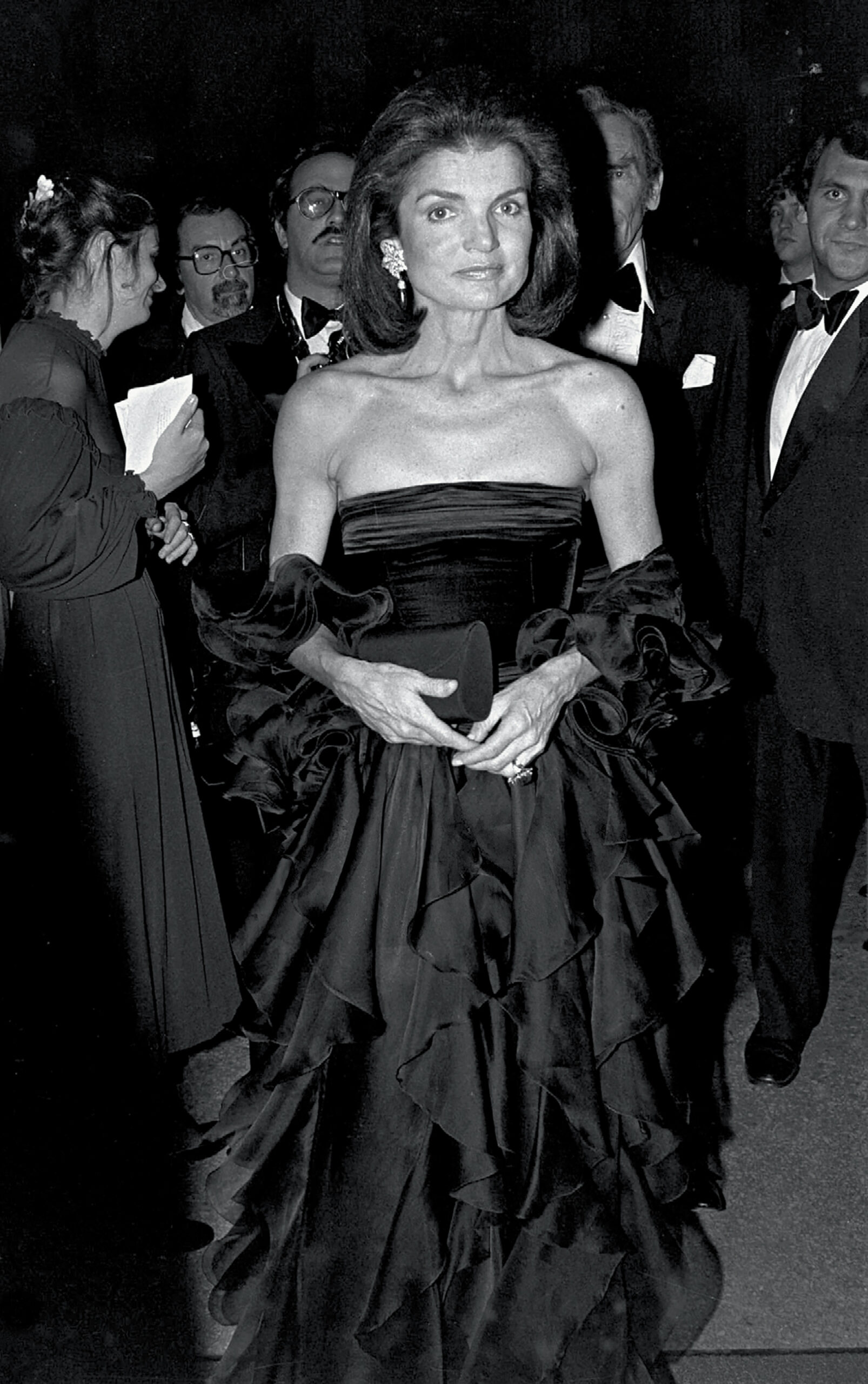
Jackie Kennedy Onassis spots Dustin Pittman while attending the gala for The Imperial Style: Fashions of the Hapsburg Era at the Metropolitan Museum of Art, New York City, 1979.
PITTMAN: I always had a good relationship with Andy. He respected me, and all the people that he worked with, I worked with. I was very good friends with Taylor Mead and Eric [Emerson] and Holly [Woodlawn] and Candy [Darling] and Jackie [Curtis]. They would roll with me and do whatever I wanted. I have some beautiful sound of Jackie rehearsing Vain Victory. I have a great film of Tayor shot in Bridgehampton. It’s called Washington Crosses the Delaware, where he’s in a boat like Washington, but he’s naked coming across the pond. It’s a movie about love. He starts off alone and then at the end he winds up with a candelabra… and I don’t want to go into any more detail. [Laughs]
OTTENBERG: I’ll let you leave it at that. What is your favorite moment in the book?
PITTMAN: There’re so many incredible moments—Woodstock, I had to hire the people for the concessions. I was up there almost a week and a half before it happened, and when I heard them testing out the sound system, I went up to the production trailer, got on the landline, and called every friend I knew and said, “Get your butt up to Woodstock now because it’s going to be incredible.” I knew that there was something on the horizon that was going to be totally unique, and it absolutely was. You know the story. It started raining. They ran out of food. A couple of people burned down the concession stands. And my friend Teak, who was my hiring assistant, we just took off and did our drugs and had a good time. We were there for Hendrix.
OTTENBERG: Amazing.
PITTMAN: We didn’t have cars so we hitchhiked back to New York. At that time, in the back of the Village Voice, they had an ad where you could drive a car to California, and they would pay for gas and expenses for four or five days. So I went down to the place and the guy accepted me. Teak and I, we’re all dressed like Easy Rider. We had the scarves and the rose-colored glasses and the jeans and the boots and our weed in a Ziploc bag. They gave us this car that was right out of Casino, this big boat that was owned by this guy in Pasadena.
OTTENBERG: Fab.
PITTMAN: I said to Teak, “We’re going to drive via the Dallas Pop Festival,” because everybody who played at Woodstock—Led Zeppelin, Janice Joplin—was going. The ranches were about five, six miles, down these dirt cattle roads. And every three feet, these hippies would get on the hood of this beautiful brand-new car. But we had a great time. That’s where I met Janice Joplin. She had a bottle of Southern Comfort, she was really drunk, and she said, “I want you to come back with me.” Anyway, we stayed at the festival too long and we were two days late to get the car to Pasadena.
OTTENBERG: Uh-oh.
PITTMAN: We were a wreck and the car was a wreck. It rained and it was muddy and we didn’t wash it. We just drove and drove and drove. We get to Pasadena and we go up the driveway and it’s all landscaped. And the guy looks exactly like Joe Pesci in Casino with a stogie in his mouth, right? He sees the car, I see him, it’s almost like a telephoto lens. I see his face, a close-up, and his eyes pop out like one of those early cartoons. And he goes, “What the fuck? What’d you do to my car?” So we grabbed our backpacks and ran.
OTTENBERG: Terrifying.
PITTMAN: Then I called up a friend who had a house in Laurel Canyon. In ’69, it was the coolest place to be. She knew everybody, from Neil Young, to Crosby, Stills and Nash, to Joni Mitchell. They would all come in and just play their guitar, smoke, fuck, whatever. That was how it was before Charles Manson ruined everything. Before the Manson family, you could walk into someone’s house, have lunch, whatever. There was no fear in Laurel Canyon, Benedict Canyon, or Topanga Canyon. I stayed with her for three weeks, met a lot of musicians, and then went back to New York.
OTTENBERG: Wow. Let’s switch gears for a second. Let’s talk about a night that you remember in discoland, Studio 54. Tell me the vibe.
PITTMAN: Well, I was lucky because I was there opening night. No one expected Studio 54 to be like Studio 54. It was absolutely all new. Just like when you walked up the ramp of the Paradise Garage, and every three feet the bass would get louder and louder. And then you’d get in there, and there’d be a sea of beautiful people.
OTTENBERG: What song do you hear in your head when you say that?
PITTMAN: So many of them, man.
OTTENBERG: Give me some.
PITTMAN: Donna Summer, “I Feel Love.”
OTTENBERG: Okay.
PITTMAN: The reason Studio 54 was so successful is because it was a democracy where they let everybody in. They didn’t let everybody in, but—
OTTENBERG: If you were fierce enough, you got in.
PITTMAN: Yeah. From Liza Minnelli, to Halston, to Rollerena, you name it. I was lucky because I had an all-access pass from Steven [Rubell] and Ian [Schrager]. Everybody knew me, and they let me stay after hours anytime. It was great.
OTTENBERG: Meaning you’re leaving at 9 a.m.?
PITTMAN: Mostly around 6, because from Studio, I’d go downtown to the after-hours clubs.
OTTENBERG: Which was where?
PITTMAN: I went to the Lower Manhattan Ocean Club. I went to the AM-PM, the Jefferson, the Continental, Arthur Weinstein’s clubs. I remember leaving at 11:30 in the morning, opening the door, and the sun hitting me like Dracula. And then getting into a cab and telling the guy I’m on my way to work. And I smelled like, oh my god—
OTTENBERG: So wait, okay, what year is it—1977?
PITTMAN: Yeah, around there.
OTTENBERG: And then what are you shooting that day?
PITTMAN: I would go right from the after-hours club to W and shoot. I had a heavy schedule. I shot millions of images for W, color and black-and-white. And it was really tough because I didn’t have assistants. I had to shoot Pentax 67, I wasn’t allowed to shoot Polaroids. And when I shot color for W, they wanted Kodachrome. Kodachrome 64 and 24 with filters on was tough. The editors would hold the reflectors. I have pic- tures of it—André Leon Talley, Ben Brantley, Bonnie Fuller. And we had the best models: Iman, Jerry Hall, the cream of the crop.
OTTENBERG: In the late ’70s, how many nights were you going out?
PITTMAN: Every night.
OTTENBERG: And thank god, right? There was no way you could stay home.
PITTMAN: Well, that was my home.
OTTENBERG: That’s so cool. Okay. I’m going to name some stars that are in the book, and you’re going to tell me what you remember about them. Liza Minnelli.
PITTMAN: Well, Liza and I go way back, because I worked on The Sterile Cuckoo in 1968 in upstate New York. I worked as a teamster, and at that time on
a production set, there weren’t many bodyguards. It was really easy to have access to the talent. Liza was married to Peter Allen; we would sit down and have lunch and talk. She liked me, and we got along. That’s my start with Liza. But throughout the years, I knew Liza from Reno Sweeney, I knew Liza from Halston, I knew Liza from Liza.
OTTENBERG: Richard Avedon.
PITTMAN: Richard was quiet, but we met. Of course, there’s a shot of him with Twyla Tharp in the book. I respected him so much, my favorite photographer.
OTTENBERG: Pat Buckley.
PITTMAN: Her and I, we got along. She was so funny. The ladies, if you want to call them the Swans, were particular about who they opened up to. André Leon Talley was one of them. I was one of them. I was really privileged to have some great conversations and some fun moments with those people. I remember when I was at the Reagan inauguration, and the shot is in the book, but Nancy Reagan wanted to be in W, and so I was sent down to cover everything— the motorcade, the inauguration ceremony, the balls.
OTTENBERG: Right.
PITTMAN: During the big ball that night—Admiral Elmo Zumwalt was there, and Dean Martin, Frank Sinatra sang—Pat came up to me and went, “What were you doing running around with a motorcade?” The social ladies were incredible. I had a great relationship with Jackie O., Swifty Lazar, and Truman Capote. We would sit down in the balcony, Truman and I, we would talk, crazy stuff. I could tell you some stories.
OTTENBERG: Are you going to tell me one right now?
PITTMAN: I can’t really, because it involves some of the catacombs.
OTTENBERG: Yeah, you can tell me when I’m looking at your quadruple-X photographs. I’m
inviting myself over. All right, well, congratulations on the book. I love it.
PITTMAN: Mel, can I just say one thing?
OTTENBERG: Of course.
PITTMAN: I really want to mention that I’m not only a photographer, but a participant of social causes, gay liberation, women’s rights, and Black Lives Matter. They mean a lot to me because I participated in the first gay liberation march across the street from Stonewall in June ’69. We marched up and down Waverly, we had no permit, and we were called all kinds of names at first, and thrown all kinds of garbage. And then as soon as we got past 23rd Street, more and more people joined us. And the slogan was, “Out of the closet and into the streets!” It was unbelievable. And then when we got to Central Park, there was a huge love-in, be-in. It was amazing.
OTTENBERG: Just to be clear, this is June 1970, right?
PITTMAN: The Women’s Rights march was in 1970. That was three years before Roe v. Wade was passed. And so we fought, participated in those rights. It was amazing. Those times were really an act of desperate courage.
OTTENBERG: I’m so glad you brought it up, because the body of work that you are showing in
this book—it’s Pat Buckley’s Swan society, it’s hedonism, it’s social bravery and courage in the face of total adversity. It’s all of those different facets of New York.
PITTMAN: And it’s my love of life.
OTTENBERG: Yes. Well, I think that’s a perfect place to end. I’m really excited about the book. I think you’re awesome, and I’m so glad to talk to you.
PITTMAN: Well, likewise, Mel. I’m really, really grateful that you took the time out to be with me. I love you, man, and I love reading Interview.
OTTENBERG: Thank you.
PITTMAN: It’s all new, and that’s how it should be. When you crack an egg, you want it to be fresh.
OTTENBERG: Fuck yeah, man. I love you too. Have a great day.
———
All photos excerpted from Dustin Pittman: New York After Dark.
Photography by Dustin Pittman. Used with permission from Rizzoli New York. All rights reserved.

